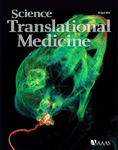SYDNEY, AUSTRALIA–Researchers at the University of New South Wales (UNSW) in Sydney have come up with an inventive mechanism to deliver gene therapy to deaf animal subjects, thereby stimulating regrowth of auditory nerves.
In an article published in the April 23 issue of the journal Science Translational Medicine, the scientists report how, for the first time, electrical pulses from a cochlear implant were used successfully to deliver gene therapy in order to regrow auditory nerves in guinea pigs.
In an interview with the UNSW Media Office Gary Housley, senior author of the research paper, said, “People with cochlear implants do well with understanding speech, but their perception of pitch can be poor, so they often miss out on the joy of music.”
“Ultimately,” said Housley, who is director of the Translational Neuroscience Facility at UNSW Medicine, “we hope that people who depend on cochlear implant devices will be able to enjoy a broader dynamic and tonal range of sound, which is particularly important for our sense of the auditory world around us and for music appreciation.”
Scientists have known for some time that if neurotrophins, a family of proteins crucial for the development, function and survival of neurons, are delivered to the cochlea, they stimulate regeneration of auditory nerve endings. What they did not have was a safe and efficient means of delivering the neurotrophins exactly where they were needed.
Housley and his colleagues at UNSW came up with a technique never tried before. In their study, they used electrical pulses from the cochlear implant to deliver the DNA to the cells close to the array of implanted electrodes, where the cells then produce neurotrophins.
They found that cochlear implants were surprisingly efficient at delivering localized gene therapy to the cochlea. The production of neurotrophins ended after a couple of months, but Housley believes that ultimately the changes in the hearing nerve may be maintained by the ongoing neural activity generated by the cochlear implant.
In their study, the authors report, “We show in the guinea pig that neurotrophin gene therapy integrated into the cochlear implant improves its performance by stimulating spiral ganglion neurite regeneration… The focusing of electric fields by particular cochlear implant electrode configurations led to surprisingly efficient gene delivery to adjacent mesenchymal cells.”
IMPLICATIONS OF FINDINGS
The research, which has support from Cochlear Ltd. through an Australian Research Council Linkage Project grant, has been five years in development.
Jim Patrick, chief scientist and senior vice-president of Cochlear Ltd., commented on the recent findings, “This research breakthrough is important because, while we have had very good outcomes with our cochlear implants so far, if we can get the nerves to grow close to the electrodes and improve the connections between them, then we’ll be able to have even better outcomes in the future.”
The mechanism that the UNSW scientists developed has potential applications for many conditions other than hearing loss. It could provide a new way of delivering gene therapy to patients for treating neurological disorders, including Parkinson’s disease, or psychiatric conditions such as depression.








